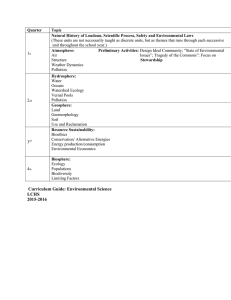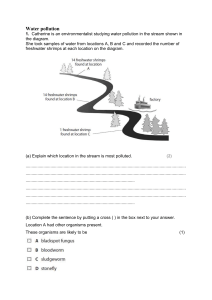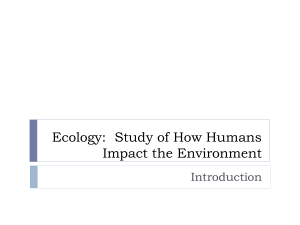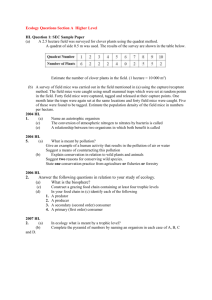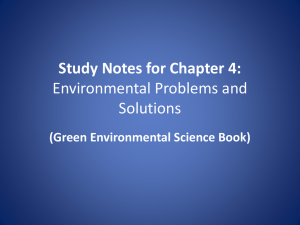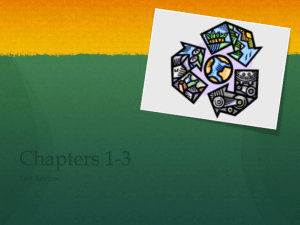1.4.1 - 1.4.4 Ecology, Ecosystem, Biosphere and Habitat OL
advertisement
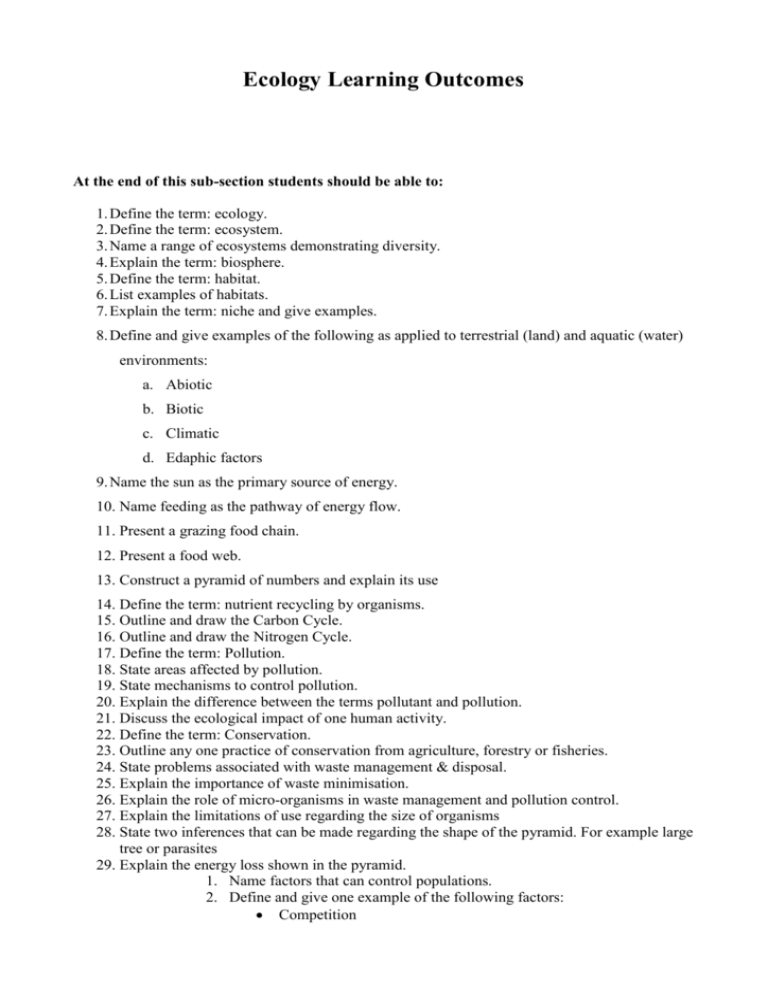
Ecology Learning Outcomes At the end of this sub-section students should be able to: 1. Define the term: ecology. 2. Define the term: ecosystem. 3. Name a range of ecosystems demonstrating diversity. 4. Explain the term: biosphere. 5. Define the term: habitat. 6. List examples of habitats. 7. Explain the term: niche and give examples. 8. Define and give examples of the following as applied to terrestrial (land) and aquatic (water) environments: a. Abiotic b. Biotic c. Climatic d. Edaphic factors 9. Name the sun as the primary source of energy. 10. Name feeding as the pathway of energy flow. 11. Present a grazing food chain. 12. Present a food web. 13. Construct a pyramid of numbers and explain its use 14. Define the term: nutrient recycling by organisms. 15. Outline and draw the Carbon Cycle. 16. Outline and draw the Nitrogen Cycle. 17. Define the term: Pollution. 18. State areas affected by pollution. 19. State mechanisms to control pollution. 20. Explain the difference between the terms pollutant and pollution. 21. Discuss the ecological impact of one human activity. 22. Define the term: Conservation. 23. Outline any one practice of conservation from agriculture, forestry or fisheries. 24. State problems associated with waste management & disposal. 25. Explain the importance of waste minimisation. 26. Explain the role of micro-organisms in waste management and pollution control. 27. Explain the limitations of use regarding the size of organisms 28. State two inferences that can be made regarding the shape of the pyramid. For example large tree or parasites 29. Explain the energy loss shown in the pyramid. 1. Name factors that can control populations. 2. Define and give one example of the following factors: Competition Predation Parasitism Symbiosis 1. Outline the contributory factors or variables in the Predator/Prey Relationships 2. State the effects on the Human Population due to: War Famine Contraception Disease
